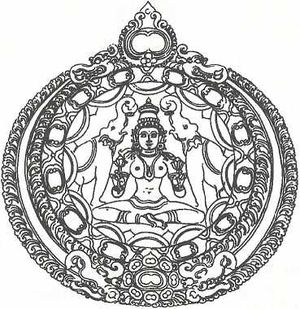Gajalakṣmi
By Swami Harshananda
Gajalakṣmi literally means ‘Lakṣmī associated with elephants’.
Gajalakṣmi is the most popular of the eight forms of Lakṣmī and is called Aṣṭamahālakṣmi. She is usually shown on the lintels of door-frames dressed in snow-white garments and is seated on a lotus of eight petals. She has four arms carrying the following:
Behind her are the two decorated elephants shown as pouring water over her from pots held in their trunks. The elephants may also be shown with raised trunks each holding a lotus in adoration. One of the well-known figures is in the stone relief of the Varāhamaṇḍapa at Māmallāpuram (Mahābalipuram) near Chennai (or Madras).
References[edit]
- The Concise Encyclopedia of Hinduism, Swami Harshananda, Ram Krishna Math, Bangalore


